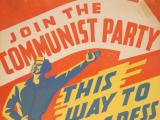The New Zealand Nuclear Free Zone, Disarmament, and Arms Control Act was passed into law, establishing this country as a nuclear and biological weapon-free zone.
Nuclear Free
Events In History
A crew member died when French secret agents mined the Greenpeace vessel Rainbow Warrior in Waitematā Harbour, Auckland.
New Zealand's Labour government refused the USS Buchanan entry because the United States would neither confirm nor deny that the warship had nuclear capability.
The visit of the nuclear-powered guided missile cruiser Texas sparked anti-nuclear rallies on land and sea.
Prime Minister Norman Kirk told the 242 crew of HMNZS Otago that their Mururoa mission was an ‘honourable’ one – they were to be a ‘silent accusing witness with the power to bring alive the conscience of the world’.
Articles
Nuclear-free New Zealand

The sinking of the Greenpeace protest ship Rainbow Warrior in Auckland in July 1985 shocked the nation. The incident galvanised an anti-nuclear movement that had emerged in opposition to both French nuclear tests at Mururoa and American warship visits to New Zealand. Read the full article
Page 1 - Nuclear-free New Zealand
The sinking of the Greenpeace protest ship Rainbow Warrior in Auckland in July 1985 shocked the nation. The incident galvanised an anti-nuclear movement that had emerged in
Page 2 - Nuclear testing in the Pacific
After the Second World War the United States, along with its French and British allies, frequently tested nuclear weapons in the Pacific
Page 3 - Ship visits
The visit of the nuclear-powered frigate USS Texas in 1983 sparked protest in New
Page 4 - Nuclear-free legislation
Labour leader David Lange tried to work with the Americans, but their 'neither confirm nor deny' policy made a middle ground virtually impossible to
Page 5 - Sinking the Rainbow Warrior
In 1985 New Zealand was basking in its position as leader of the anti-nuclear movement. Then on 10 July, two explosions set by French Secret Service agents ripped through the hull
The Cold War

Although the origins of the so-called Cold War can be traced back to the Bolshevik revolution of 1917, this intense ideological struggle between the Western powers and the Soviet Union really began after the Second World War. Read the full article
Page 2 - Overview
New Zealand’s participation in the Cold War was shaped by its decision to support the Western powers in their confrontation with the Soviet Union after the Second World War.
Page 6 - Protest and dissent
The end of the Vietnam War shifted the focus of the Cold War away from Asia and New Zealand's need for ‘forward defence’ diminished. These changes, together with the anti-Vietnam
Page 7 - Last decade
Soviet-American tensions revived in the late 1970s as ‘détente’ (co-operation) gave way to a renewed arms race.
The Royal New Zealand Navy
Seventy years old in October 2011, the Royal New Zealand Navy is today an integral part of the New Zealand Defence Force. But its 1941 establishment was the result of a long process of naval development. Read the full article
Page 6 - Post-war operations
Like all the services the RNZN faced difficulties of readjustment to peacetime conditions, not only in drastically reducing numbers but also in determining the shape of the
Page 7 - New directions
The RNZN’s independence as a service came to an end when the Ministry of Defence (created in July 1963) was reconstituted to incorporate all three armed services on 1 January




















